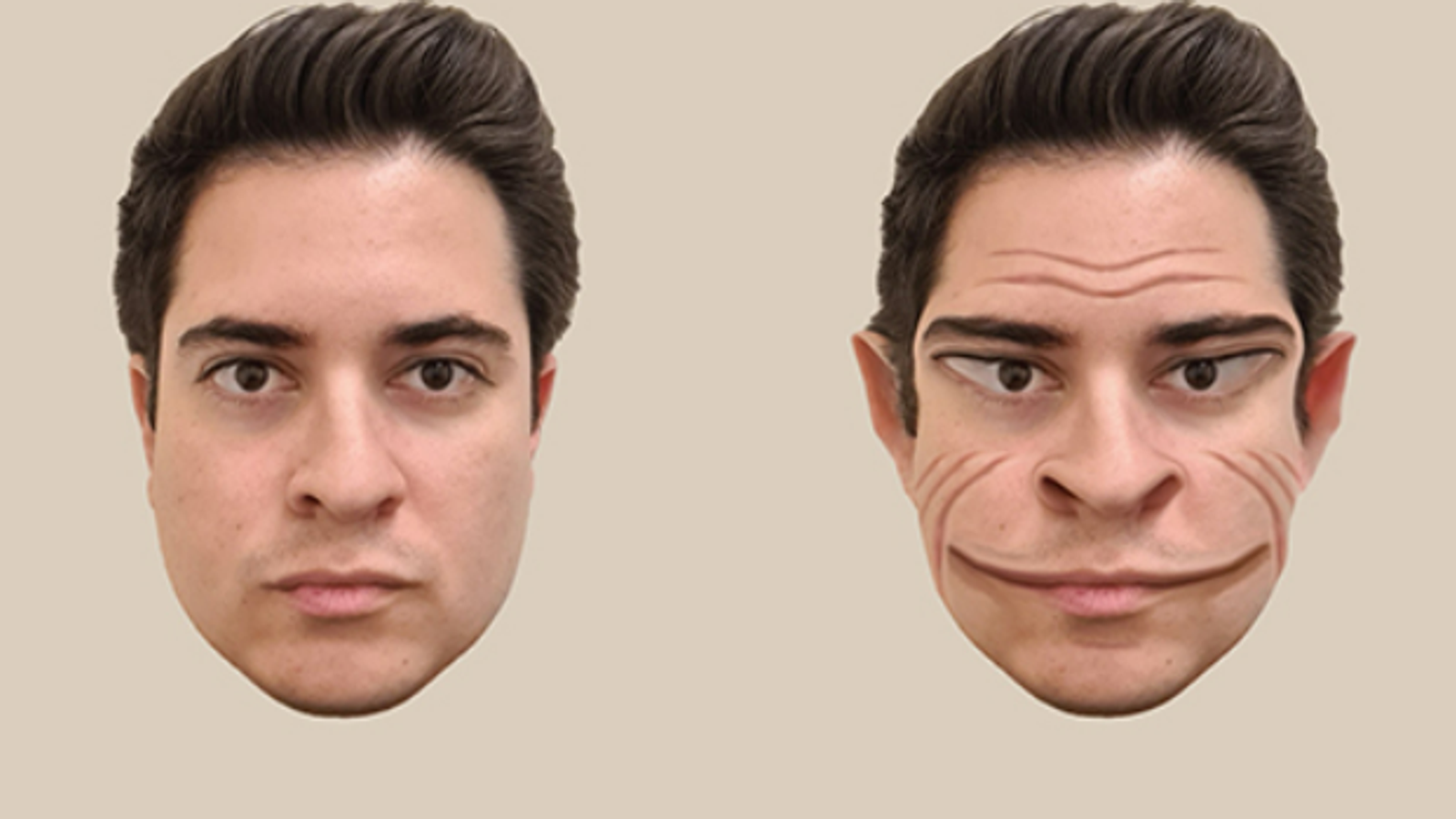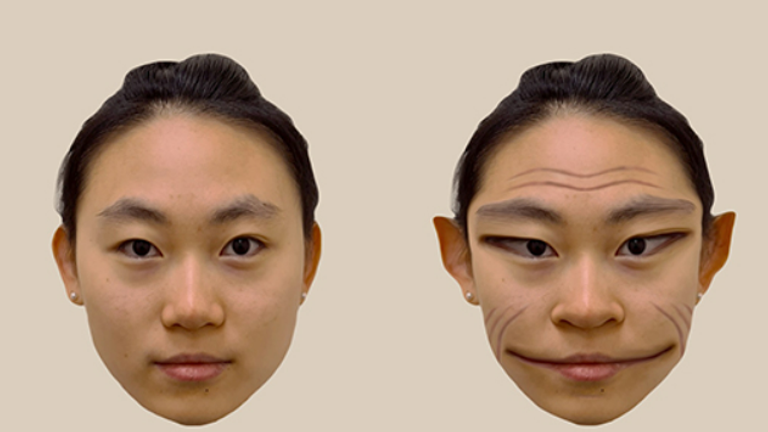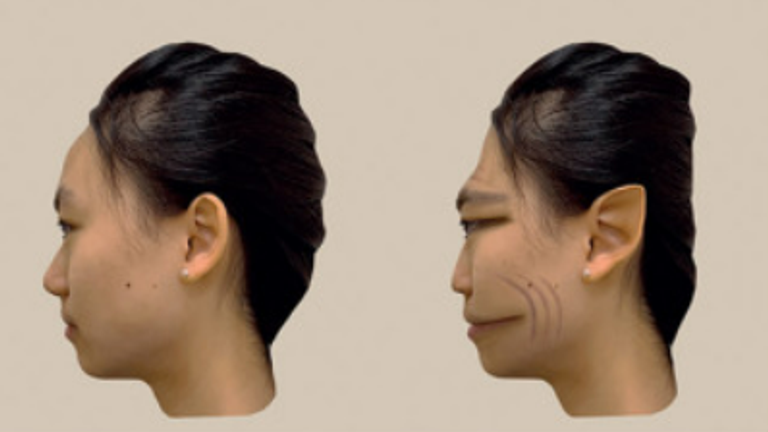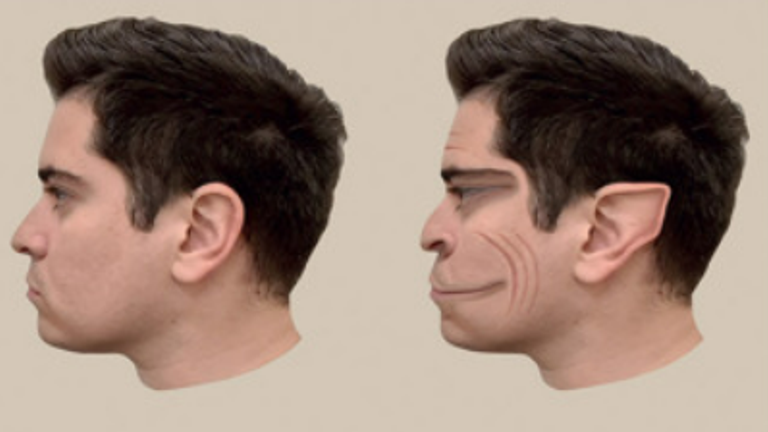When Victor Sharrah woke up one day in November 2020, he feared he was in some sort of “demonic world”.
When he looked at people’s faces, they appeared “demon-like”, with their ears, noses and mouths stretched back, and with deep grooves in their foreheads, cheeks and chins.
“You can’t imagine how scary it was,” the 59-year-old, from Clarksville, Tennessee, said.
What he was actually seeing were distortions, caused by an incredibly rare neurological disorder, known as prosopometamorphopsia, or PMO.
Even more unusual in the case of Mr Sharrah was that, when he looked at a phone or computer screen, people’s faces appeared normally.
That gave scientists an interesting opportunity to put Mr Sharrah at the centre of an interesting new study – the results of which were recently published in respected medical journal, The Lancet.
For the first time, researchers were able to recreate these rare PMO distortions in the form of pictures.
“As the patient reported no distortion when viewing facial images on a screen or on paper, we asked him to compare an in-person face to a photograph of the face taken in the same room under identical lighting conditions,” the authors said in their report.
“By alternating between observing the in-person face perceived as distorted and the photo on a computer screen-perceived as undistorted, he provided real-time feedback on the perceived differences.
“We then used image-editing software to modify each photo until it matched his in-person perception.”
What is PMO?
There are reportedly fewer than 100 published case reports of PMO, and scientists don’t fully understand what triggers it.
However, they suspect it is caused by dysfunction in the brain network that handles facial processing.
The distortions can vary from case to case, with other people reporting seeing people with droopy or off-set eyes, and others reporting seeing “witch-like” features.
Interestingly, unlike a person experiencing hallucinations due to a mental disorder, a person with PMO is aware that what they are seeing is a distortion or that something is wrong with their vision.
Read more from Sky News:
US to call for ‘immediate ceasefire’ in Gaza
US justice department sues Apple
According to NBC, the US partner of Sky News, researchers offered two possible triggers in the case of Mr Sharrah.
The first was that he had carbon monoxide poisoning four months before his PMO symptoms started.
The second was he had endured a significant head injury 15 years earlier while hitting his head on concrete, with MRI scans showing a lesion on the left side of his brain.
Mr Sharrah also has a history of bipolar affective disorder and post-traumatic stress disorder, according to the study.
Though PMO symptoms often resolve after a few days or weeks, they can linger for years, and Mr Sharrah said he still sees demonic faces.
‘I came close to having myself institutionalised’
He has found ways to cope with his condition, including living with a roommate and her two kids, which he said has been helpful, because he’s used to having people around, so he isn’t as spooked when he sees new faces in public.
According to NBC, he also finds that green light alleviates his symptoms, so he sometimes wears glasses with green-tinted lenses when he’s in crowds.
Mr Sharrah wants others to know they can manage the condition.
“I came so close to having myself institutionalised,” he added.
According to the study’s lead author, Antonio Mello, a PhD student who works in Dartmouth’s Social Perception Lab, many doctors aren’t aware of PMO and may misdiagnose people with mental health disorders instead.
As a result, some PMO patients have been prescribed medications for schizophrenia or psychosis, which aren’t appropriate for their condition, he added.



